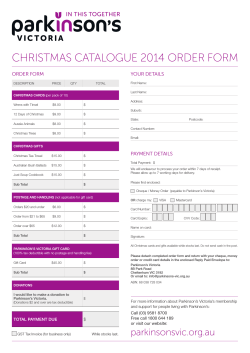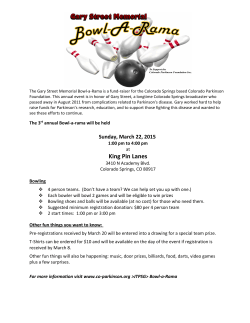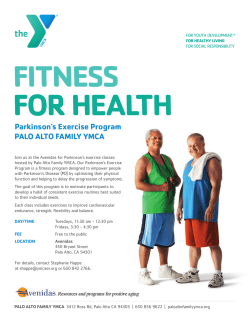
NEW! Early Parkinson`s Symptoms:Knowing the Red Flags
PATIENTHANDOUT By Robin Hocevar Early Parkinson’s Symptoms: Knowing the Red Flags JEFFREY LEESER SINCE MANY of the earliest signs of Parkinson’s disease (PD) are also synonymous with the aging process, it can be difficult to know what warrants a doctor’s appointment. One hallmark of the disease is the first symptoms presenting on one side of the body. Eventually, they may spread to the other side but often are more severe on one side than the other. Should this occur, it’s a good idea to contact your doctor. Shaking. A trademark symptom of Parkinson’s disease is trembling of the hands. Patients with Parkinson’s often find their fingers shaking involuntarily while they’re sitting still. In the early stages of the disease, about 70% of people experience a slight tremor in the hand or foot on one side of the body, or less commonly in the jaw or face. A typical onset is tremor in one finger. Stiffness. Many patients with Parkinson’s report muscle stiffness and pain in any area of the body as one of the initial signs of Parkinson’s. People with PD most commonly experience tightness of the neck, shoulder and leg. Slower Movement. Simple activities of daily living, like walking across the room, become very difficult for patients with Parkinson’s. It’s very common for steps to shorten or foot dragging to take the place of normal gait. This is called bradykinesia. Due to bradykinesia, a person with Parkinson’s may have difficulty performing everyday functions, such as buttoning a shirt, cutting food or brushing teeth. Balance issues. Patients with Parkinson’s sometimes develop a stooped posture or other balance problem may develop. The disease course often means that a patient has lost the ability to remain stable and hold an upright posture. Some sway backward when changing positions or experience difficulty turning. Automatic movement difficulties. While gesturing while talking, swinging your arms while walking and smiling were once involuntarily, in the patient with Parkinson’s, they require a great deal of thought. People with PD most commonly experience tightness of the neck, shoulder and leg, which can be painful for some. Slurring or slowing of speech. Similarly, speech is no longer as fluent. Patients with Parkinson’s need a lot of time to find the right words or answer questions and often slur. Others can’t easily raise their volume or speak in a monotone. Shrinking handwriting. Parkinson’s disease forces many to print much smaller and writing often becomes more difficult to read. This progresses the more a patient with Parkinson’s writes and is associated with bradykinesia (slower movement). Non-Motor Symptoms Many in the scientific research community believe non-motor symptoms may precede motor symptoms for Parkinson’s, even by a matter of years. Some common non-motor symptoms include: • loss of sense of smell, constipation; • REM behavior disorder (a sleep disorder); • mood disorders; and •orthostatic hypotension (low blood pressure when standing up). The fact that not all of these symptoms must be present makes diagnosing Parkinson’s very complicated for doctors. Younger patients, classified as those under age 40, often only have one symptom. The non-motor symptoms, especially, can be caused by many different medical issues. Though Parkinson’s is considered a progressive disease, the speed at which patients progress depends on the individual. Because of the wide variation in symptoms and the fact that many are simply associated with aging, it’s important not to panic and assume the worst. Though there is no cure, Parkinson’s is highly manageable with medication. Many patients remain employed even for decades after diagnosis and a strong medical management team can help maintain normalcy. Research has shown that those who take an active role in their care see an improvement in their Parkinson’s symptoms. If you suspect you or a loved one may have Parkinson’s, contact your internist and ask for a referral to a neurologist specializing in movement disorders. n Robin Hocevar is on staff at ADVANCE. Contact: rhocevar@advanceweb.com. Sponsored by: Our website www.caregiverproducts.com includes a section just for Parkinson’s aids. The products can be found in the APDA reference guide “Be Independent” at www.apdaparkinson.org. The purpose of this Patient Education Handout is to further explain or remind you about a medical condition. This handout is a general guide only. If you have specific questions, be sure to discuss them with your healthcare provider. This handout may be reproduced for distribution to patients. View and print this and other patient handouts on our web site, www.advanceweb.com/NurseHandouts. ©2015 MERION MATTERS
© Copyright 2025





















